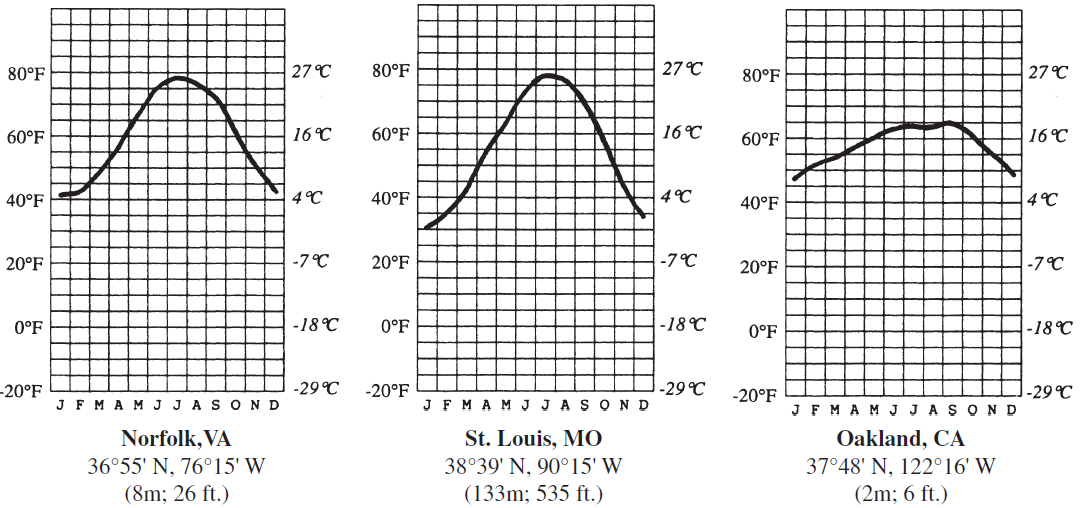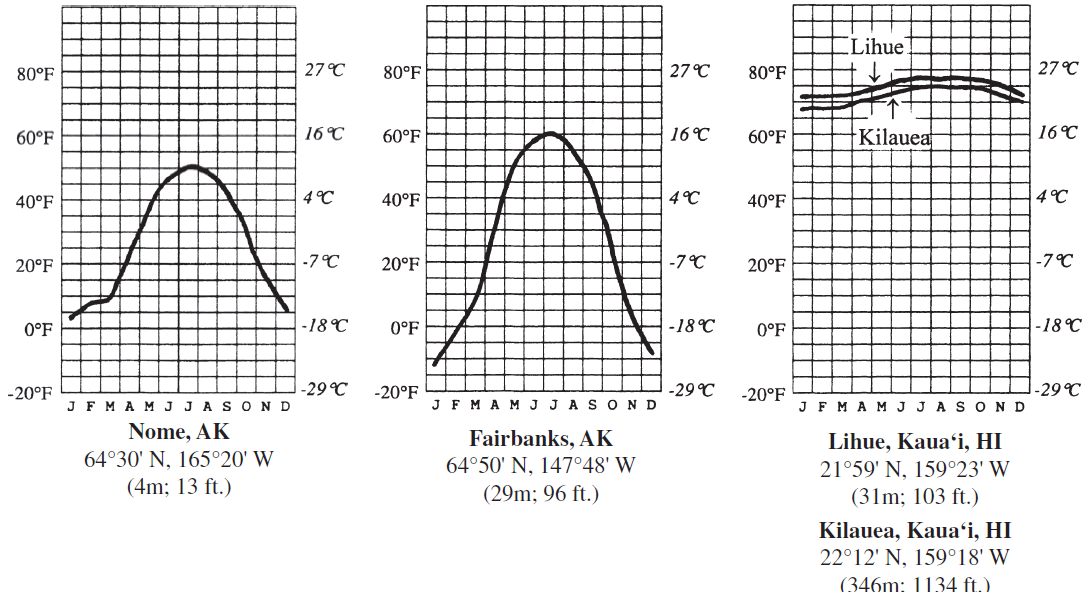In which of the following regions is shifting cultivation more likely to be seen?
A) East Asia
B) Russia
C) Sub-Saharan Africa
D) Australia
E) Southwest Asia
Answer: C
You might also like to view...
Which factor primarily explains the difference in temperature patterns between Fairbanks and Nome?
Six charts showing the average monthly temperature (in °C and °F) for seven U.S. cities are provided (the first letter of each month of the year is shown along the bottom of the charts). For each of the cities, the latitude and longitude, as well as the elevation, are provided.


Answer the question by comparing the temperature charts. In your answers, consider the one temperature control factor that is most responsible for the patterns shown (choose from latitude, land–water contrasts, wind patterns, or altitude). You may use the same answer for more than one question. You should locate each of the cities on a world map before trying to answer the question. If altitude is the main factor cited, calculate the expected temperature difference between the two cities based on the average lapse rate.
The speed of a satellite in circular orbit doesn't change because gravitational force on it is
A. canceled by centrifugal force. B. very weak due to altitude. C. perpendicular to its direction of motion. D. small compared to other forces on it.
Consider an iron rod that is 1-m long and expands 1/4 cm when heated. By how much will a 100-m rod of the same material expand when similarly heated?
What will be an ideal response?
________ crystallizes from an intermediate composition lava.
A. Basalt B. Andesite C. Composite D. Gabbro E. Rhyolite